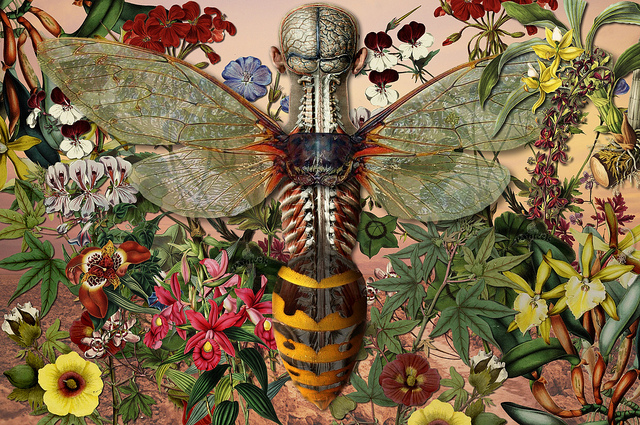In our first session, a new therapy client of mine explained that she was homeless.
She had a bad car accident a few years ago and never really found her footing in the years after. Because I am a board-certified dance therapist as well as a licensed professional counselor, I recognized that this surprisingly bright-eyed woman was stuck in trauma response.
Traumatic situations create a movement path that we now understand because of Stephen Porges’ polyvagal theory and how it enlightens the work of trauma expert Peter Levine. I have written several articles for elephant journal that explain the basics of polyvagal theory.
When we are stuck in trauma response, we are unable to complete the cycle of movement that begins when we encounter danger. One of those movement options involves leaving the body. My last elephant journal article talks about ways we can leave our body in day-to-day life.
Are we all at risk of becoming homeless?
Yes. In his books about trauma, such as his first one, Waking the Tiger, Peter Levine helps us recognize the trauma potential in many experiences that we do not imagine could create trauma, such as surgery. My client had surgery following the car accident, but surgery in and of itself can be traumatic, and not knowing the potential for trauma leaves many people stuck in trauma response after a surgery.
When we recognize experiences that set off traumatic movement patterns in our lives, we better understand our zoning out. We identify why we cannot seem to come home to our bodies. The word for healthy internal balance starts off with the word home. That word is homeostasis.
When we are stuck in trauma response, our bodies are not finding homeostasis. Trauma is one condition that leaves us homeless.
Psychosis—a Kind of Homelessness.
When we have psychotic episodes, we choose temporary homelessness. A psychotic episode is like the insect’s splitting open of its exoskeleton. Insects do this because their bodies have grown too big for their previous exoskeleton. People who experience psychosis are seeking better housing for expanded thinking.
Polyvagal theory helps us understand that our bodies give us two different types of nervous system functioning, one for when we are safe and one for when we sense life-threatening danger. Our bodies are not designed to operate on an on-going basis using nervous system functioning available for life-threatening danger.
These days, many of us find ourselves in some sort of anxious version of fight or flight, or a zoned-out version of shut down and we can feel the dysfunction. We may search for new housing so to speak—a new way to live in our bodies.
Acknowledging a Nomadic Way of Living.
In this idea of our bodies as our homes, we are all nomads. We choose to keep our body-homes in places on the earth that ideally support our aliveness. When those places no longer offer the real and/or metaphoric food, water and shelter that our bodies need, we uproot and move.
Some of us move frequently, others rarely and some may say that they will never move. It is important to our wellbeing that we accept that leaving home must happen at least once for all of us.
No place on earth will always have what sustains us.
There will be a time when we must move on however reluctantly. Death is the final move. Our animal bodies have a survival instinct that can make us fear death so much that we dig our claws into living situations that do not nurture us well. The risk of possible death can make us stay in painful living arrangements rather than search for a new place to pitch our tent.
Those people like my client that we call The Homeless may actually be nomadic or they may be disembodied—homeless. If they are homeless, what kind of homelessness are they experiencing? Are they stuck in trauma or are they in the process of growing into a new home—a new exoskeleton? The answer to these questions would help us help The Homeless. It would also help us help ourselves.
Us and Them.
When we see our own journey in the journey that others are on, we can feel so terrified of that reflection that we look away. When we understand our human animal experiences, we are more likely to offer a smile of recognition to our fellow travelers. Understanding each person’s unique version of what is common helps us all belong.
~
~
~
Author: Dee Wagner
Image: Flickr/Lewis Minor
Editor: Travis May











Read 0 comments and reply